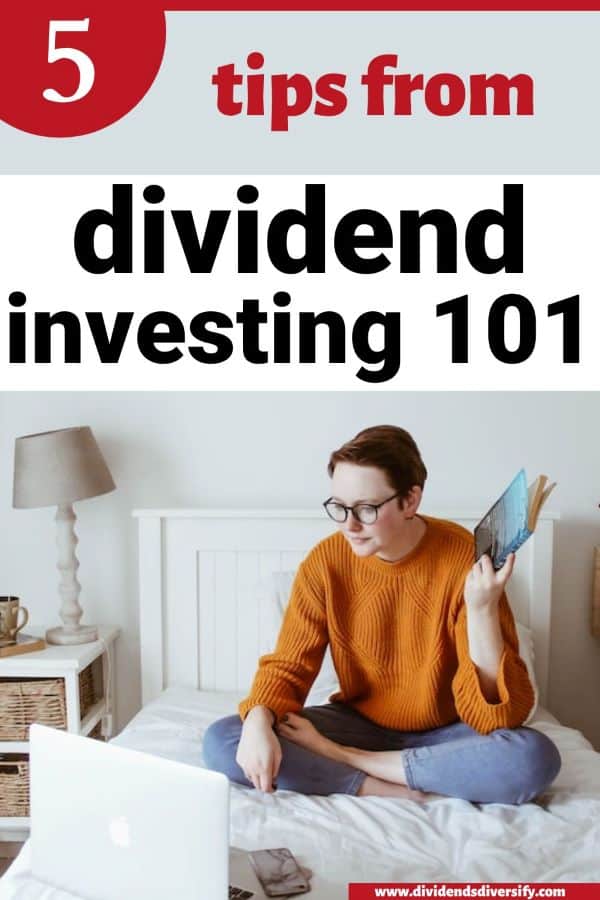Challenging Some Theories About Dividend Stock Investing
When pursuing my graduate degree in business, I wished my school offered a Dividend Investing 101 course. However, they did not.
I had a lot of hands-on dividend stock investing experience at the time. As a result, it would have been interesting to see what such a course covered.
After thinking about the investing and securities analysis courses I did take, I came to one conclusion.
Specifically, a university-level course about dividend investing 101 would have been overly complex. Also, far too academic to be helpful.
So, I want to talk about why I think so.
5 Dividend Investing 101 Lessons You Can Forget About
Here are 5 lessons from Dividend Stocks 101 that you can potentially ignore:
- ETFs aren’t a viable option
- Exhaustive dividend stock research is required
- High dividend yields are always a bad idea
- You must invest for dividend growth
- Reinvesting dividends is necessary
Next, I will discuss these possible myths about dividend stocks 101 in more detail.

Disclosure: At no cost to you, I may get commissions for purchases made through links in this post.
1. Exchange-Traded Funds (ETFs) Aren’t A Viable Option
It would make for a boring course if ETFs were the recommended option for dividend investing.
The course would go something like this:
Hello class. Welcome to Dividend Investing 101.
First, select one or more dividend-paying index funds. Then, invest regularly. Finally, hold your ETFs for the long term.
Class over! Everyone gets an “A” for the semester.
Conversely, ETFs that pay dividends are an excellent choice for many investors.
For example, here are some superb ETF choices offered by Vanguard:
- High Dividend Yield ETF (VYM)
- Dividend Appreciation ETF (VIG)
- International High Dividend Yield ETF (VYMI)
- Utilities ETF (VPU)
- Real Estate Investment Trust ETF (VNQ)
As a result, pay attention to the easiest dividend investing options. Sometimes simple is better.
Next is lesson 2 from dividend stocks 101, another point from the class you may forget.
2. Exhaustive Dividend Stock Research Is Required
No matter what the textbook says, comprehensive research on dividend stock investments is optional.
First, research is unnecessary when investing in dividend stocks through ETFs. Furthermore, in-depth analysis is optional when choosing individual stocks.
Let me ask the question directly. Is it essential to examine all of the recommended dividend metrics?
Some of those measures include:
- The appropriate dividend payout ratio
- Stock valuation
- Dividend growth rate
Well, not necessarily.
I think grabbing the list of Dividend Kings and Aristocrats. They represent stocks will long and rich dividend-paying histories.
Then, select one or more for your investments. But, of course, choosing companies and businesses you know and understand from your everyday experiences is even better.
For example, consider companies like:
- Clorox (CLX)
- Johnson & Johnson (JNJ)
- Procter & Gamble (PG)
- PepsiCo (PEP)
- Coca-Cola (KO)
- Hormel Food (HRL)
- Realty Income (O)
Stocks like these have paid regular and recurring dividends for decades.
Also, they have continued increasing dividends paid on an annual basis. All the while, their investors benefit from a rising stock price.
Better yet, these companies will likely do the same for many years into the future. So, is comprehensive stock research always necessary?
I think not.
Finally, you can let the experts do the stock research on your behalf. For this, I like the Motley Fool Stock Advisor. Motley Fool delivers excellent stock recommendations to my inbox every month.
Here is another point about the conventional wisdom from a dividend investing basics course. It is another area I would like to dispute.
3. High Dividend Yields Are Always A Bad Idea
Large dividend yields are neither bad nor good. High dividend yields are just high.
What’s wrong with getting paid a high dividend yield? Yes, there are some investment risks involved.
However, consider the dividend yield on stocks like:
- AbbVie (ABBV)
- Altria (MO)
- AT&T (T)
- Verizon (VZ)
Each company pays off much cash to investors with dividends. There is nothing wrong with earning a nice amount of cash dividends for investing your hard-earned dollars.
And there is a flip side to this argument. Allow me to explain.

4. You Must Invest For Dividend Growth
Typical investment advice says to invest for growth, especially for younger people. Furthermore, there is nothing wrong with this advice.
However, slow and steady dividend stocks that share profits with investors in cash can be suitable investments, even for younger investors.
Growth stocks with a 1% dividend yield and the potential for 10% growth are just fine.
However, there is nothing wrong with a company that pays a 5% dividend yield. But, it offers only 2-3% dividend growth.
Here is the last point from Dividend Investing 101 that I must challenge.
5. Reinvesting Dividends Is Necessary
Should dividend reinvestment be a priority? Well, potentially.
However, what if you need the cash to pay bills?
Then reinvesting dividends may not be possible. So, don’t get fooled. You don’t have to reinvest your dividend income.
Yes, doing so helps compound your investment returns. But it is not required.
Okay. That’s all I have today about the basics of dividend investing.
Please allow me to close with a few parting thoughts.
Final Thoughts About Dividend Investing 101
You may have figured out one thing by now. Especially if you know me and follow my thinking about dividend stock investing.
Specifically, today I’m being flippant and insincere. Thus, I suggest the dividend investing basics listed below.
Basics Of Dividend Investing
1) Seriously consider dividend-paying ETFs versus individual stocks
2) Buy only dividend stocks that you have researched and fully understand
3) Be careful investing in stocks with high dividend yields
4) Look for solid past and sustainable future dividend growth
5) Reinvest dividends whenever possible
Thus, if I were teaching dividend investing 101, these are the lessons I recommend. Not the lessons to forget!
Finally, consider the online course Simply Investing offers to level up your dividend investing game.
The course will teach you all the golden rules for becoming a successful dividend investor.
Thanks for reading. And before you go, check out our article archives. It covers:

Author Bio: Tom Scott founded the consulting and coaching firm Dividends Diversify, LLC. He leverages his expertise and decades of experience in goal setting, relocation assistance, and investing for long-term wealth to help clients reach their full potential.